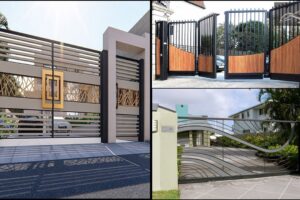Cooling towers play an important role in Singapore’s climate by helping control heat in many industries and buildings. When thinking about cooling systems, it’s helpful to know the different types of cooling towers in Singapore and how they work. This guide will take you through the main types of cooling towers, making it simple for you to understand the basics. Whether you’re just starting to learn or want more details, this is a good place to begin.
What Are Cooling Towers?
Before jumping into the different types of cooling towers, let’s look at what they really are. Cooling towers are tall structures that help get rid of extra heat from buildings or industrial machines. They work by bringing water and air together, which cools the water through evaporation. This cooling process is very important in a hot and humid place like Singapore, where good cooling can save energy and make places more comfortable.
Cooling towers in Singapore come in many types. They vary based on design, purpose, and the environment they’re used in. So, let’s explore the main types you should know about.
1. Natural Draft Cooling Towers
Natural draft cooling towers are some of the most common types around the world, and they are also used in Singapore. They are tall, and their height helps naturally move air through the tower. But what makes them different?
- How Do They Work?
Natural draft cooling towers use the difference in air temperature to move air. Warm air rises, and cooler air moves in to replace it, creating a natural flow. This makes them very efficient while using little energy.
- Benefits
One big advantage is that they need little to no mechanical energy, which helps lower costs. They work well for big power plants and industries that need a lot of cooling and have enough space for tall structures.
- Where They’re Used
These cooling towers work well in large factories but are less common for office buildings. They need a lot of space, which is hard to find in some parts of Singapore.
2. Mechanical Draft Cooling Towers
Mechanical draft cooling towers are popular in Singapore because they are compact and efficient. They use fans to move air, which makes them effective even in small areas.
- How Do They Work?
These towers use strong fans to push or pull air through the tower. Unlike natural draft towers, they don’t depend only on natural airflow, which means they cool more steadily and can be easily controlled.
- Types of Mechanical Draft Towers
There are two main kinds: forced draft and induced draft. Forced draft towers use fans at the bottom to push air into the tower, while induced draft towers have fans at the top to pull air out. Forced draft towers are quieter, while induced draft towers save more energy.
- Benefits
Mechanical draft cooling towers are flexible and work for many different needs. Their design allows them to fit in smaller spaces, which is important in crowded areas like Singapore.
3. Crossflow Cooling Towers
Another type you might see in Singapore is the crossflow cooling tower. These towers are designed to allow air to move sideways while water flows down.
- How Do They Work?
In a crossflow tower, water drips down through fill material while air flows across it. This design helps with good heat transfer, and maintenance is easier because the inside is more open.
- Benefits
Crossflow towers are easier to maintain because they are open and easy to reach, making them good for smaller places or places that need lots of upkeep. They can freeze in cold weather, but that’s not a problem in Singapore.
4. Counterflow Cooling Towers
Counterflow cooling towers are also common in Singapore. They work differently from crossflow towers, with air moving up while water flows down.
- How Do They Work?
The air and water go in opposite directions, which makes the design smaller. This allows counterflow towers to cool better than crossflow towers.
- Benefits
Counterflow cooling towers are compact, which makes them perfect for areas with little space, like city centres in Singapore. But they are harder to maintain because of their tight structure.
5. Hybrid Cooling Towers
Hybrid cooling towers are becoming more popular in Singapore as companies try to be more green. These towers mix wet and dry cooling to use less water and reduce visible steam.
- How Do They Work?
Hybrid towers can switch between wet and dry modes, depending on cooling needs and the weather. This flexibility makes them eco-friendly, as they use less water.
- Benefits
Hybrid cooling towers are great for businesses that want to help the environment. They cost more to set up, but they save water and help reduce the impact on nature.
Choosing the Right Cooling Tower for Your Needs
When picking a cooling tower in Singapore, you need to think about a few things. The choice depends on the size of your building, cooling needs, space, and environmental concerns.
- Space Availability: Mechanical draft towers are good if you have limited space, while natural draft towers need a lot more room.
- Cooling Needs: For big power plants, natural draft towers work well. For smaller office buildings, mechanical or hybrid towers are often better.
- Environmental Impact: If you want to use less water and help the environment, hybrid towers are a smart choice.
- Maintenance: Crossflow towers are easier to take care of, while counterflow towers cool better but need more work to keep them running well.
Why Cooling Towers Matter in Singapore
Singapore’s hot climate means it stays warm all year, which makes cooling very important for both factories and buildings. Cooling towers in Singapore help save energy by cooling down areas efficiently, which helps make indoor spaces more comfortable and machinery work better.
Also, Singapore is working towards being more green, so using cooling towers that save energy and reduce harm to the environment is even more important. Hybrid cooling towers, for example, are a good way to balance cooling with being environmentally friendly.
Benefits of Proper Cooling Tower Management
It’s also important to take care of cooling towers properly. Here are some tips:
- Regular Checks: Check the cooling towers often to catch problems early.
- Water Treatment: Treat the water to stop things like rust and scaling that can reduce cooling power.
- Energy Tracking: Watch how much energy the cooling tower uses to find ways to save.
- Upgrading: Replace old parts or upgrade to new cooling towers to keep everything running smoothly.
Conclusion
Cooling towers play a crucial role in regulating heat and energy efficiency, especially in regions like Singapore, where the climate is consistently warm. These towers help dissipate excess heat from industrial processes, HVAC systems, and power plants, ensuring optimal operation. When choosing a cooling tower, it’s important to consider factors like the type of draft system, such as natural draft, mechanical draft, crossflow, counterflow, or hybrid towers, as each has its own set of benefits and limitations. A natural draft tower relies on the natural upward movement of air, while mechanical draft towers use fans to increase air circulation. Understanding these options allows businesses to select the most energy-efficient and cost-effective cooling solution for their needs. The right choice can help reduce energy consumption, lower operational costs, and contribute to a more sustainable, eco-friendly environment.




